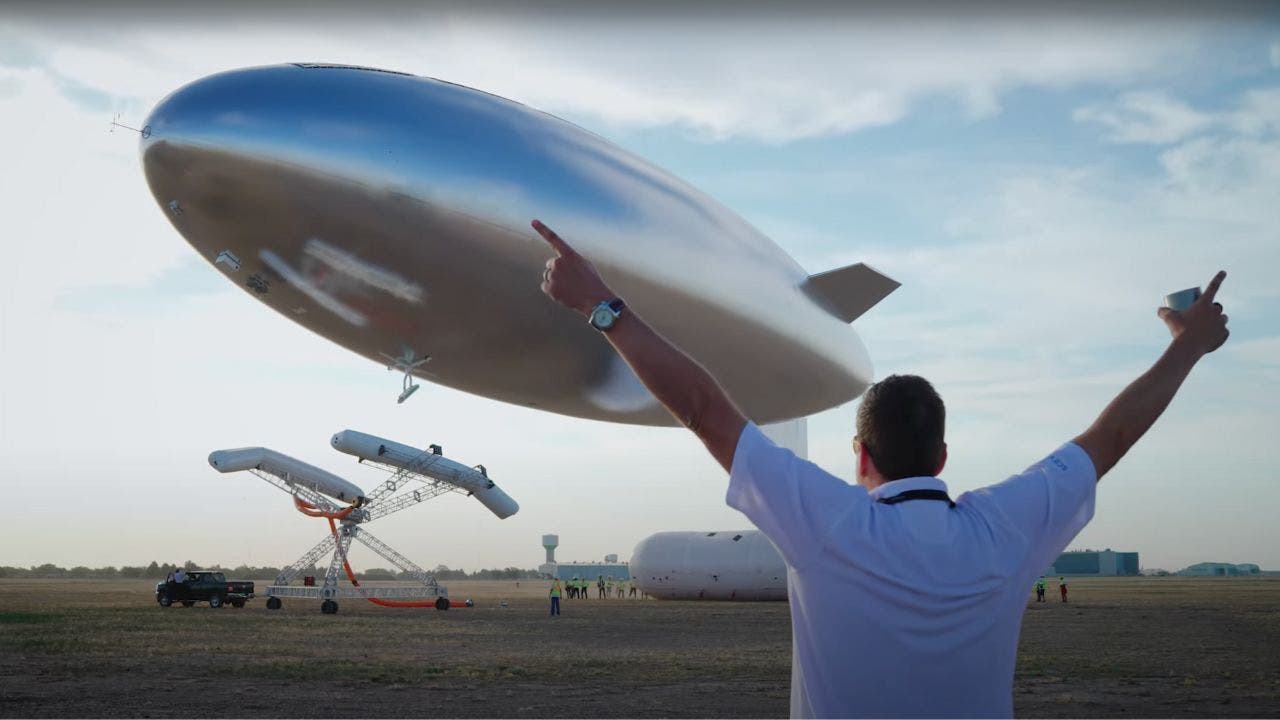A blimp powered by solar energy could provide high-speed internet to your location.
A global connectivity solution soaring in the sky.

Have you ever experienced the inconvenience of not having internet while camping, hiking, or residing in a remote area? Losing internet access can be frustrating, whether you're trying to connect with loved ones, access vital information, or enjoy your favorite streaming service. Many people face this issue daily. However, a new technology from Sceye could provide a solution to the digital divide that affects so many individuals.

Enter the Sceye HAPS: A blimp-like aircraft with a mission
The Sceye HAPS is a unique aircraft that measures 213 feet long and is filled with helium. It is designed to fly to high altitudes, hovering between 60,000 and 65,000 feet above the Earth's surface. What sets it apart is its ability to provide high-speed internet to areas that lack traditional infrastructure.

Solar-powered stratospheric sentinel
The Sceye HAPS's power source is one of its most impressive features. The aircraft is equipped with a "solar cape" made of gallium selenide and gallium arsenide solar cells, which enables it to harness the sun's energy for months at a time. This sustainable power approach allows the HAPS to perform its critical tasks continuously, including providing internet access and monitoring environmental conditions.

Breaking records and bridging divides
The Sceye HAPS is already making waves in the real world. It has set a long-range record by maintaining a data connection across a distance of over 87 miles, far exceeding the typical LTE range. This achievement has significant implications for bridging the digital divide, especially in areas like the Navajo Nation, where the HAPS is part of a project to provide universal broadband access. By demonstrating its ability to connect over such vast distances, the Sceye HAPS is proving its potential to revolutionize internet access in remote and underserved communities.

More than just internet
The Sceye HAPS aircraft is not only used to provide internet access but also has capabilities for climate and environmental monitoring, disaster response, forest fire detection, and tracking and measuring methane emissions as part of an EPA study.

Recent milestones and future plans
The Sceye HAPS has shown its technological prowess in a recent flight by charging its batteries during the day and using that power to stay aloft at night, a significant milestone towards long-duration missions. With 20 test flights completed and commercial deployment scheduled for 2025, the future looks promising for this stratospheric innovation.

Kurt's key takeaways
The Sceye HAPS is revolutionizing global connectivity by utilizing a high-tech blimp to bring the internet to remote areas. This innovative flying device is tackling longstanding problems in the digital world, making our world more connected and better prepared for natural disasters. Although there are still some challenges to overcome, the Sceye HAPS is proving that the solution to big global problems may lie in thinking outside the box and reaching new heights.
Would you like to express any concerns regarding high-altitude aircraft such as the Sceye HAPS flying in the stratosphere? Please contact us at Cyberguy.com/Contact.
To receive my tech tips and security alerts, sign up for my free CyberGuy Report Newsletter at Cyberguy.com/Newsletter.
Let us know what stories you'd like us to cover.
Follow Kurt on his social channels:
Answers to the most asked CyberGuy questions:
New from Kurt:
Copyright 2024 CyberGuy.com. All rights reserved.
tech

15 things to do or try first when you get a new iPhone: 1. Set up your phone with your personal information and preferences. 2. Install your favorite apps and games. 3. Connect your phone to your Wi-Fi network and other devices. 4. Take a few photos and test out the camera. 5. Set up your email and other accounts. 6. Enable security features like Touch ID or Face ID. 7. Customize your phone's settings and appearance. 8. Explore the built-in features and apps on your phone. 9. Connect with friends and family on social media. 10. Set up reminders and alarms. 11. Use the phone's built-in voice assistant. 12. Download and install new apps from the App Store. 13. Set up your phone's screen time and parental controls. 14. Enable automatic updates for your apps and software. 15. Back up your important data to cloud storage or an external hard drive.
techYou might also like
- Five top home inventory apps to safeguard your property during an emergency
- Your smart home gadgets will soon receive a new security seal of approval.
- This year, save time, privacy, and money with these 10 tech upgrades.
- Is your Windows 11 PC frequently restarting? Let's resolve this annoying issue.
- Sony's entry into the electric vehicle market is a surprising move.


















